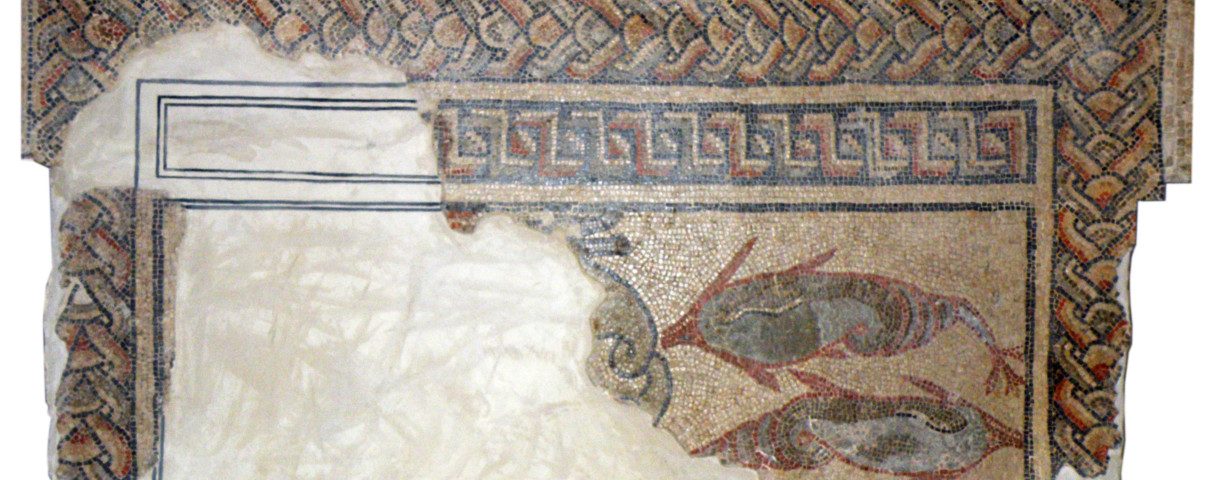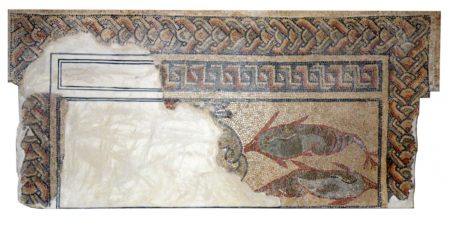Dolphins have a rich background in Greek and Roman mythology. Find out more in our latest blog by Emily, a Museum Studies M.A. student at the University of Leicester.
Dolphins, like those seen on the Venus Mosaic found at Kingscote in Gloucestershire, are a fairly popular image in Roman art. They have a rich background in Greek and Roman mythology, literature, and folklore. They were often included in sculptures to improve the stability of the main figures!
Dolphins are featured in many Greek and Roman myths. Here, they are symbols of romance, illustrating the theme established by the depiction of Venus, the Roman Goddess of Love, in the central roundel of the mosaic. The presence of these dolphins alongside Venus also serves as a reminder of the myth that Venus was born from the sea, famously depicted in Botticelli’s late fifteenth century painting ‘The Birth of Venus’.
Their association with Venus is by no means their only significance in Greek and Roman mythology. In the sixth/seventh century B.C. ‘Homeric Hymns’, Dionysus, the Greek God of Wine and Theatre (who later became Bacchus in Roman mythology), was kidnapped by pirates. He turned into a lion to punish the kidnappers and, terrified, they jumped overboard. When they hit the water, Dionysus turned them into dolphins. The ‘Homeric Hymns’ also describe Apollo, a Greek and Roman God, turning into a dolphin to guide a ship into harbour. Another myth tells that Apollo’s son, Eikadios, was shipwrecked and carried to shore by a dolphin. This is one of many myths about dolphins rescuing drowming men, or bringing bodies back to shore for burial.
Dolphins are also often associated with minor sea deities. The Roman author Statius wrote in his first century A.D. epic poem ‘Achilleid’ that the sea-nymph Thetis rode a chariot through the sea that was pulled by two dolphins. Similarly, Philostratus’ ‘Imagines’describes a scene in which the one-eyed cyclops Polyphemus falls in love with the sea-nymph Galatea while she is riding four dolphins.
Many dolphin stories can also be found in Greek and Roman folklore from small coastal towns. In the first century A.D. Pliny the Elder recorded in his ‘Natural History’ the story of a young Roman boy who befriended a dolphin. Every day when the boy needed to cross the bay to get to school, he would call on his dolphin friend to carry him across the water. A second century A.D. story tells the tale of an elderly couple who rescued a young, injured dolphin and trained it to catch fish for them.
Images and stories about dolphins spread across the Roman Empire, and even made it to Gloucestershire! Come and see the Kingscote Venus Mosaic and its dolphins on display at the Corinium Museum.
This blog was written by Emily Tilley, a Museum Studies M.A. student at the University of Leicester.













Comments
Interesting! What do dolphins represent in The Shield of Aeneas?